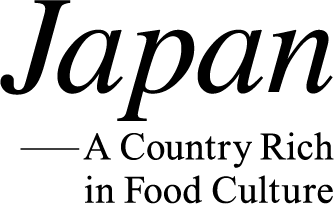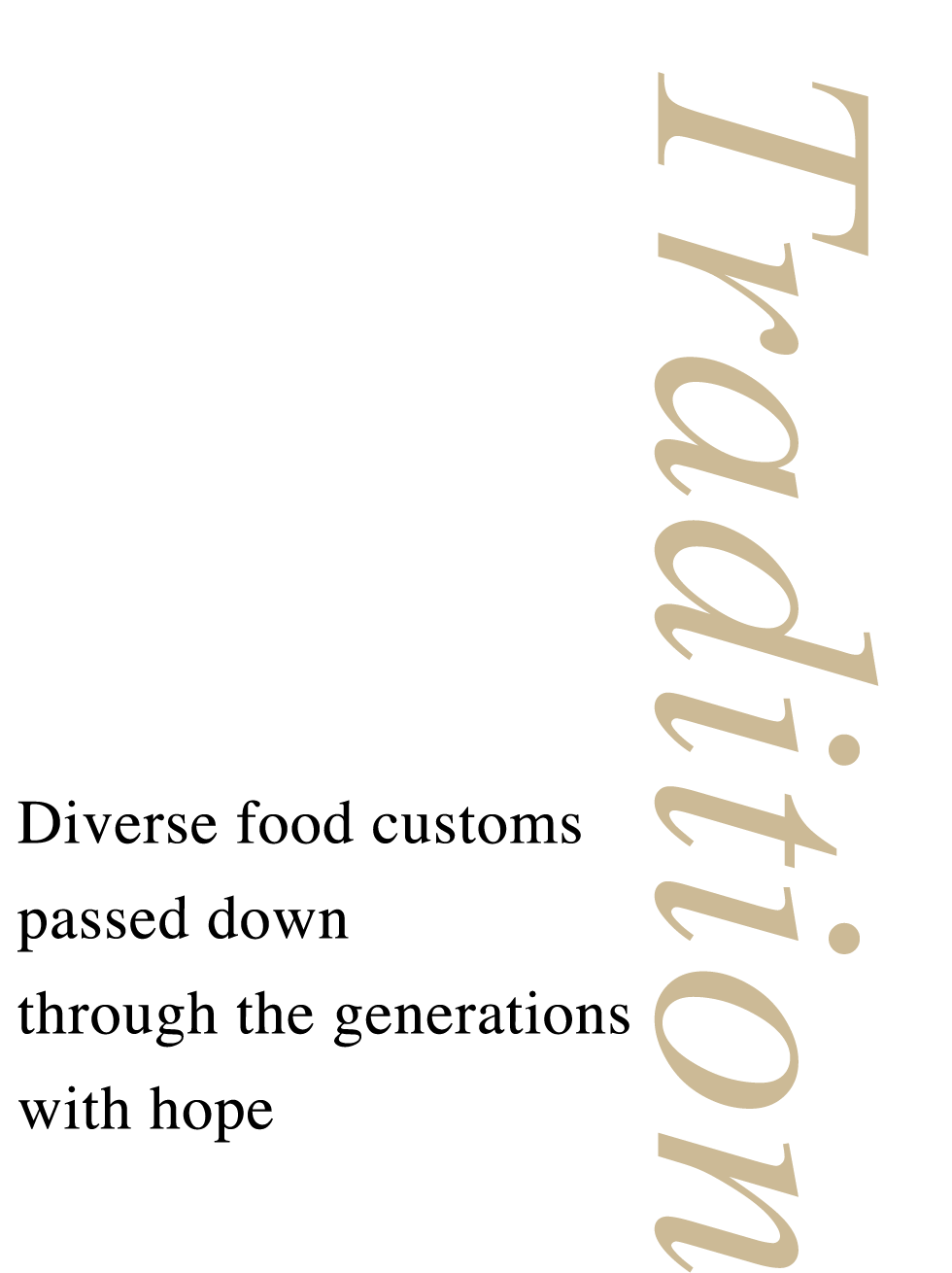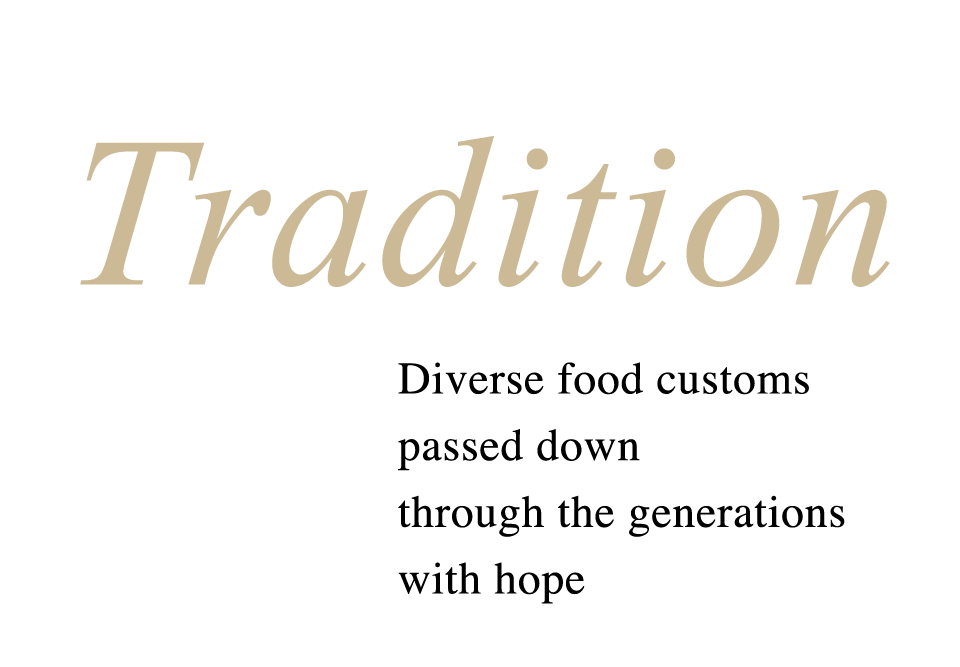Japanese food culture has close ties to annual festivals and celebrations, with special foods being prepared for specific events. These are called gyoji-shoku (celebration foods). At New Year, there is tosozake (spiced sake) and the assorted dishes collectively known as osechi-ryori. The Hinamatsuri doll festival on March 3 is associated with hamaguri clam broth and the pink, white, and green diamond-shaped rice cakes called hishimochi. For Children’s Day on May 5, people serve chimaki—glutinous rice balls wrapped in a bamboo or other leaf—and rice cakes filled with sweet bean paste and wrapped in an oak leaf, known as kashiwa mochi. These celebration foods are traditionally prepared to ward off misfortune and pray for children’s growth and an abundant harvest.
Aside from such annual festivals, there are also celebrations to mark important milestones in people’s lives, such as okuizome—the first meal ceremony held to mark a baby’s first 100 days of life—as well as coming of age and wedding ceremonies. Among the dishes served on such occasions are whole fish complete with head and tail, and sekihan, consisting of glutinous rice cooked with red adzuki beans.
In Japan, where great importance is attached to food customs appropriate to each setting, sharing mealtimes helps to strengthen the bonds of family and community, as well as to pass on traditions from one generation to the next.




